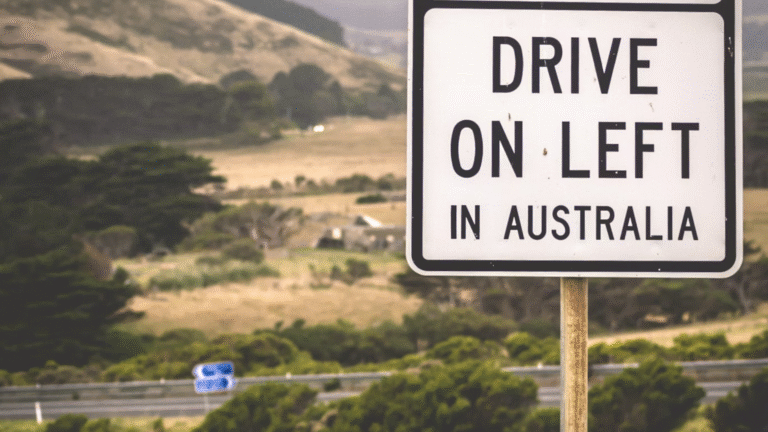Moving to a new state is a big undertaking—and when you own an electric vehicle (EV), there are extra considerations to keep in mind. From navigating charging infrastructure in a new area to understanding registration rules that vary by state, planning ahead can save you time, stress, and unnecessary costs.
Whether you’re relocating from Sydney to Brisbane, Perth to Melbourne, or anywhere in between, this guide breaks down everything Australian EV drivers should know before making an interstate move.
—
Table of Contents
- EV Registration Rules by State
- Roadworthy and Inspection Requirements
- What Happens to Your EV Incentives or Rebates?
- Planning Charging for the Drive Itself
- Charging Access at Your New Home
- Updating Your Toll Tags and Parking Apps
- Insurance Implications for a New State
- Tips for a Smooth Transition
- FAQs
- Conclusion
—
1. EV Registration Rules by State
Each Australian state and territory has its own rules and fees when it comes to vehicle registration. That includes electric vehicles.
Some things to check:
- Does your new state offer reduced registration for EVs?
- Are there stamp duties or transfer fees?
- Is proof of address required immediately, or can you use your old rego for a while?
For example:
- In New South Wales, new EVs up to $78,000 are exempt from stamp duty.
- Victoria previously had a controversial EV road-user charge (now under review).
- ACT provides 2 years free registration for zero-emission vehicles.
Check the relevant government transport website in your destination state to understand what documents you’ll need and the costs involved.
—
2. Roadworthy and Inspection Requirements
When registering your vehicle in a new state, you may need to provide a:
- Roadworthy Certificate (RWC)
- Vehicle Identity Check
- Proof of purchase or ownership
- Odometer reading
Even if your EV is new or under warranty, some states still require an inspection. Make sure to book this in advance—especially if you’re arriving in a high-demand area.
—
3. What Happens to Your EV Incentives or Rebates?
Unfortunately, EV incentives don’t travel with you. If you received a rebate or incentive from your original state (e.g., NSW’s $3,000 EV rebate), it typically doesn’t carry over when you move.
However, if you haven’t yet claimed an incentive in your new state—and you meet the eligibility criteria—you may be able to apply as a new resident with a recently registered vehicle. Read the fine print carefully.
—
4. Planning Charging for the Drive Itself
A long interstate journey means planning your charging stops:
- Use apps like PlugShare or A Better Routeplanner (ABRP) to map out DC fast chargers.
- Account for charger availability, especially in rural or regional areas.
- Be flexible with timing—some stations may be busy or under maintenance.
- Consider staying overnight at EV-friendly motels or caravan parks with destination charging.
If you’re towing a trailer or carrying a full load, remember that range may be reduced by 15–30%.
—
5. Charging Access at Your New Home
Before you move, ask:
- Does your new property have off-street parking?
- Is there a standard power outlet near where you’ll park?
- Can you install a home wall charger (if you own the property)?
- If renting or in an apartment, are EV chargers already available—or is the body corporate open to installation?
You may need to liaise with electricians, property managers, or landlords ahead of time to ensure smooth access.
—
6. Updating Your Toll Tags and Parking Apps
EV drivers often use tollways and public parking services that vary by region.
Checklist:
- Swap out your toll tag to the local provider (e.g., Linkt in QLD/NSW/VIC).
- Update your vehicle registration and billing address in your toll and parking apps.
- Cancel any local permits or subscriptions from your previous city.
- Check for any EV-specific discounts, like reduced rates in council-operated parking stations.
—
7. Insurance Implications for a New State
Your insurer needs to know when you move:
- Premiums may change based on your new address.
- Update your garaging location for accurate risk assessment.
- Some insurers offer cheaper rates for EVs—shop around if your policy renews post-move.
Also check if roadside assistance coverage includes your new region and charging-related support.
—
8. Tips for a Smooth Transition
- 📋 Make a checklist of state-specific vehicle paperwork.
- 🔌 Bring your charging cable(s) and adapters — not all public chargers are Type 2.
- 🗺 Leave extra travel time if you’re driving the EV across long distances.
- 🧾 Keep all moving receipts — if you’re relocating for work, some costs may be tax deductible.
- 🏠 If renting, scout EV-friendly homes on platforms that let you filter for garages or off-street parking.
—
9. FAQs
Q: Do I need to re-register my EV immediately after moving?
A: Most states require registration within 3 months of relocating, but check your local rules.
Q: Can I keep my current licence plate?
A: Usually no—plates are issued by state authorities and must be surrendered when you re-register.
Q: Will my EV warranty still be valid if I move states?
A: Yes, manufacturer warranties are nationwide in Australia.
Q: What if my new state has fewer chargers?
A: Consider installing a home charger or using apps to locate nearby stations until infrastructure catches up.
—
10. Conclusion
Relocating with an EV in Australia involves a few more steps than moving with a petrol car—but it’s far from difficult. With the right planning, tools, and awareness of local rules, you’ll be set up to keep driving electric no matter where you land.
Interstate moves are also a great way to test your EV’s long-distance capabilities and discover just how liveable electric driving really is—across the entire country.
—
Moving interstate with your EV? Learn what Aussie drivers need to know about registration, charging, tolls, and more when relocating across state lines.
